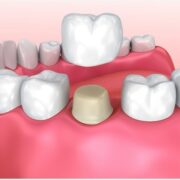Combustion engines generate carbon as a byproduct when they burn fuel. This carbon typically settled down inside the engine in the form of black soot. The carbon accumulates inside the combustion chamber and air intake. With time, this carbon soot becomes hard and starts affecting your vehicle’s engine performance. In other words, the carbon restricts your vehicle to breath properly. This can result in overheating, engine knocking or higher oil consumption.
In such a situation, your only option is to hire engine carbon clean services. In this article, we are going to provide you information about engine carbon cleaning. You’ll know what causes carbon build-up, its indications, and how it is cleaned.
Indications of Carbon Build Up
There are certain indications of an excessive amount of carbon inside the engine. The following signs can inform you that your vehicle has excessive carbon build-up.
- Poor fuel economy
- Running rough
- Performance issues such as feeling sluggish
- Poor vehicle emissions
- Excessive exhaust emissions
How to Remove Carbon Build Up
In order to remove the carbon build-up, you have to open the engine. Opening the cylinder head after removing the components of the vehicle’s engine. Once done, you can remove excess carbon by following the five simple steps.
Step 1
Place the piston to close the valves at the top dead center. Then use a plastic or wooden scraper to gently scrape carbon from the cylinder’s head. Make sure that the scraper doesn’t harm the aluminum. Use steel wool, wire brush or putty knife to remove stubborn deposits.
Step 2
Use a solvent to clean away the rest of the carbon from the surface. If carbon deposits are stubborn, try to soak the metal parts for some time. A solvent can lose stubborn grit and make scrapping easy. Set the head aside after cleaning it thoroughly. Use the same approach to clean carbon from the piston. However, make sure that the valves are closed and the piston is present at the top.
Step 3
In order to clean the valves, turn the crankshaft. This will open the valve and you can perform the cleaning. Only use a brass wire brush to clean the valves. Be cautious and remove the visible carbon carefully from the valves. However, don’t let the grit to fall between the cylinder wall and the piston or the valve chambers.
Step 4
After removing deposits, do an inspection of the valve seats and the valves. Take a look to inspect whether they are warped, rough or cracked. Before you reassemble the head, take them for an inspection to an authorized dealer.
Step 5
Make sure that there is no residue left behind on the engine block, cylinder head, and the head gasket. If there’s any carbon, remove it by using a solvent, scraper or both. And before installing the head gasket, don’t forget to clean its surfaces. Any oil or debris present on the engine block or cylinder head can prevent a tight seal. This can result in possible engine damage in the future.
Benefits of Carbon Cleaning
Here are some main benefits that your vehicle may receive after carbon cleaning.
- Restoring drivability
- Restoring vehicles fuel economy
- Removing carbon build-up
- Restoring lost power
- Improvement in vehicle emissions
- Engine smoothness and better drivability













